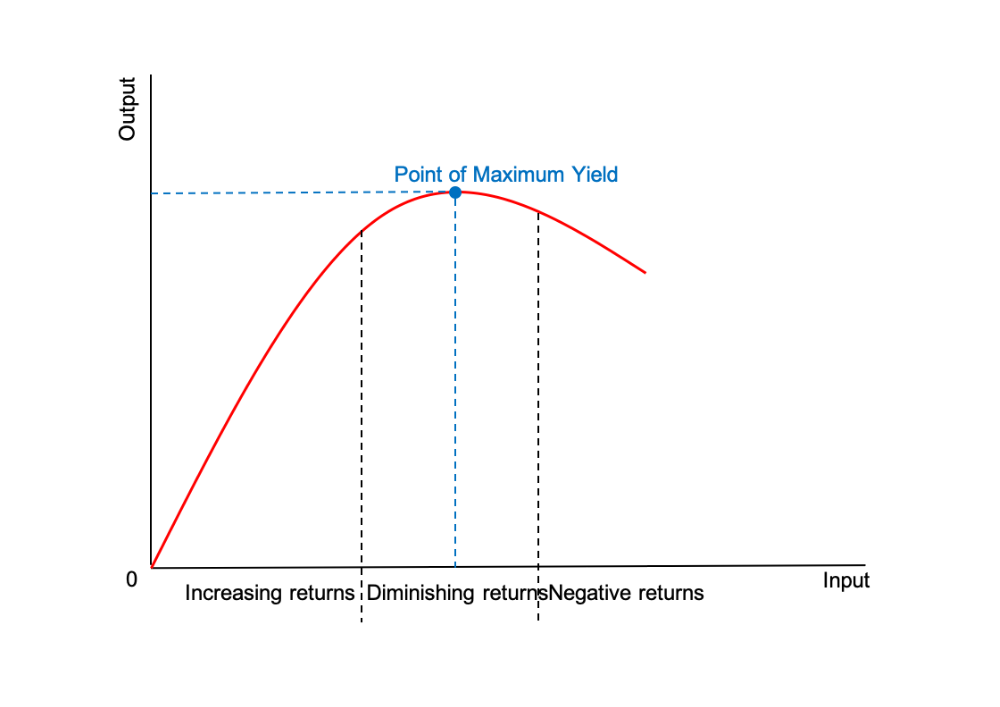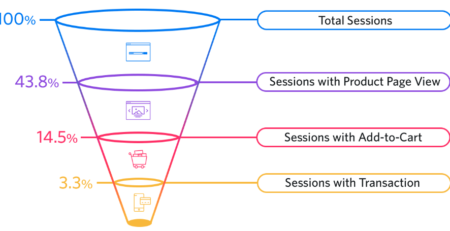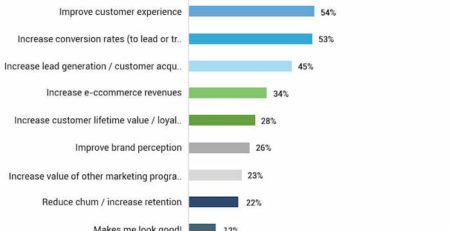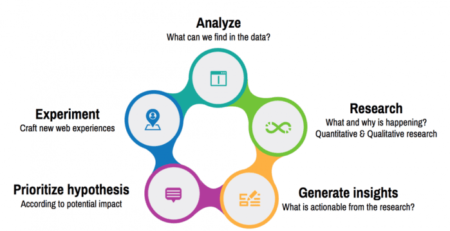When Does Conversion Rate Optimization Give Diminishing Returns?
When does conversion rate optimization give diminishing returns? It’s a question that many marketers and website owners ask themselves. In the ever-evolving digital landscape, optimizing conversion rates is crucial for success. But there comes a point where the returns on your optimization efforts start to diminish. So, when exactly does that happen? Let’s find out!
Conversion rate optimization, or CRO for short, is the process of improving the percentage of website visitors who take a desired action, such as making a purchase or filling out a form. It involves analyzing user behavior, conducting experiments, and implementing changes to enhance the overall user experience. Initially, taking a data-driven approach to CRO can yield significant improvements in conversion rates. But as you continue to make tweaks and refinements, you may start to see diminishing returns.
When it comes to CRO, there’s a delicate balance between making impactful changes and making unnecessary modifications. At first, low-hanging fruits can be easily identified and addressed, leading to noticeable improvements. However, as you optimize further, the incremental gains become smaller and harder to achieve. It’s important to recognize when you’ve reached a point of diminishing returns and shift your focus to other areas of your marketing strategy.
So, the question remains: when does conversion rate optimization give diminishing returns? Join us as we delve deeper into this topic, exploring the signs that indicate it’s time to reassess your CRO efforts and allocate your resources more effectively. Let’s optimize our knowledge and discover how to strike the perfect balance in the ever-changing world of conversion rate optimization!
1. Reaching a plateau: After implementing initial optimizations, further improvements might yield smaller gains.
2. Neglecting qualitative data: Relying solely on quantitative data can miss valuable insights for optimization.
3. Focusing on minor elements: Spending excessive effort on small details instead of major bottlenecks.
4. No holistic approach: Ignoring the overall user experience and focusing only on conversion rates.
5. Insufficient traffic: Low traffic volume can limit the impact of optimization efforts.
To maximize CRO effectiveness, continuously analyze data, consider user feedback, and prioritize significant optimizations.
When Does Conversion Rate Optimization Give Diminishing Returns?
Conversion rate optimization (CRO) is a crucial aspect of any digital marketing strategy. It involves making strategic changes to improve the percentage of website visitors who take a desired action, such as making a purchase or signing up for a newsletter. However, there comes a point in CRO efforts where the returns start to diminish. It’s important for businesses to recognize when this happens in order to optimize their resources and focus on other areas that yield better results. In this article, we’ll explore the factors that contribute to diminishing returns in conversion rate optimization and provide insights on how to identify this point.
The Role of Traffic Volume
One of the key factors that can lead to diminishing returns in CRO is the volume of traffic coming to your website. At the outset, when the traffic volume is low, even small improvements in conversion rates can have a significant impact on overall performance. However, as your website gains popularity and traffic increases, the incremental gains from further optimization efforts become smaller. This is because you have already captured a significant portion of your target audience and the remaining visitors may be more difficult to convert.
It’s important to monitor your website traffic and analyze conversion rates over time. If you notice that your conversion rates are plateauing despite ongoing optimization efforts, it may be an indication that you have reached a point of diminishing returns. Instead of investing more resources in further optimization, you may want to consider focusing on other strategies to drive traffic, such as content marketing or social media advertising.
Saturation of Test Variations
Another factor that can contribute to diminishing returns in CRO is the saturation of test variations. A/B testing is a common technique used in CRO, where different versions of a webpage are tested to determine which performs better in terms of conversions. However, there is a limit to the number of meaningful test variations that can be conducted.
Initially, when you start testing, there may be several low-hanging fruits that can significantly improve conversion rates. However, as you exhaust these obvious changes and start testing more subtle variations, the incremental gains become smaller. At this point, it’s important to assess the value and impact of each test variation. If the potential gains are minimal, it may be a sign that you are experiencing diminishing returns in your CRO efforts.
User Experience Optimization
While conversion rate optimization focuses on improving specific metrics, such as click-through rates or form completions, it’s important to consider the overall user experience. In some cases, excessive optimization efforts can negatively impact the user experience, leading to diminishing returns.
For example, if you prioritize aggressive pop-ups or intrusive advertisements in an attempt to maximize conversions, it may lead to a negative user experience and increased bounce rates. It’s crucial to strike a balance between optimization and a seamless user experience. Sometimes, prioritizing user experience over further optimization efforts can actually lead to better results in the long run.
The Importance of Competitive Analysis
In order to determine when your CRO efforts are giving diminishing returns, it’s essential to keep a close eye on your competitors. Conducting regular competitive analysis can provide valuable insights into industry trends and benchmark your performance against other players in the market.
If you notice that your competitors are consistently outperforming you in terms of conversion rates, despite your ongoing optimization efforts, it may be an indication that you have reached a plateau. Instead of solely focusing on optimization, it’s important to take a step back and analyze your overall marketing strategy. Look for areas where you can differentiate yourself, whether it’s through unique value propositions, innovative marketing campaigns, or targeted audience segmentation.
When to Reevaluate Conversion Rate Optimization
While conversion rate optimization is a valuable strategy, it’s important to recognize when it starts to give diminishing returns. Here are a few key indicators that can help you determine when to reevaluate your CRO efforts:
- Plateauing conversion rates despite ongoing optimization efforts
- Significant increases in website traffic without corresponding improvements in conversions
- Diminishing returns from A/B testing as you exhaust obvious variations
- Negative impact on user experience due to excessive optimization efforts
- Consistently underperforming compared to competitors in terms of conversion rates
When these indicators become apparent, it’s important to reassess your marketing strategy and allocate resources to other areas that can generate better results. Conversion rate optimization is just one piece of the puzzle, and it’s crucial to have a holistic approach to digital marketing to maximize your overall performance.
Benefits of Optimizing Conversion Rates
Optimizing conversion rates offers several benefits for businesses. Here are some key advantages:
Increased Revenue
Improving conversion rates directly impacts your revenue. By increasing the percentage of visitors who take the desired action, whether it’s making a purchase, signing up for a service, or completing a form, you can generate more revenue without increasing your marketing spend. Even small improvements in conversion rates can have a significant impact on your bottom line.
Better Return on Investment
Conversion rate optimization allows you to make the most of your marketing budget. By optimizing your website experience and improving the conversion rates, you can increase the return on investment (ROI) of your marketing efforts. Instead of spending more on acquiring new visitors, you can focus on converting the existing traffic more effectively.
Improved User Experience
Conversion rate optimization involves understanding your audience’s needs and preferences. By optimizing your website and making it more user-friendly, you can enhance the overall user experience. This not only improves conversions but also fosters customer loyalty and satisfaction.
Competitive Advantage
Having a higher conversion rate than your competitors can give you a significant competitive advantage. It indicates that you are providing a better user experience and effectively persuading visitors to take the desired action. By continuously optimizing and staying ahead of the curve, you can maintain your competitive edge in the market.
Conclusion:
Conversion rate optimization is a valuable strategy, but it’s important to recognize when it starts to yield diminishing returns. Factors such as traffic volume, saturation of test variations, and user experience optimization can all contribute to reaching this point. By closely monitoring conversion rates, conducting competitive analysis, and assessing the overall impact of optimization efforts, businesses can determine when to reevaluate their CRO strategies. It’s crucial to have a holistic approach to digital marketing and allocate resources to areas that can generate better results when CRO starts to give diminishing returns.
Key Takeaways: When Does Conversion Rate Optimization Give Diminishing Returns?
- Conversion rate optimization is the process of improving the percentage of website visitors who take desired actions.
- When a website already has a high conversion rate, further optimization efforts may result in diminishing returns.
- Diminishing returns occur when the cost of optimization outweighs the incremental gains in conversion rate.
- It is crucial to reassess the cost-benefit ratio and prioritize other marketing strategies if diminishing returns are experienced.
- Testing and monitoring conversion rate KPIs is essential to determine the optimal time to focus on other areas of improvement.
Frequently Asked Questions
Conversion rate optimization (CRO) is a crucial process for businesses looking to improve their website’s performance. However, there may come a point where continued optimization efforts result in diminishing returns. Here are some frequently asked questions about when conversion rate optimization can give diminishing returns:
1. How do you know when it’s time to stop optimizing conversion rates?
Knowing when to stop optimizing conversion rates can be challenging. One key indicator is when you’ve reached a point of diminishing returns. This means that despite your efforts, you’re not seeing significant improvements in your conversion rates. Another factor to consider is cost. If the resources and time required to optimize conversion rates outweigh the potential benefits, it might be time to shift focus.
Additionally, it’s important to look at the bigger picture. If your website is already performing well, and you’ve achieved satisfactory conversion rates, further optimization may not yield substantial gains. It’s crucial to strike a balance between continuously improving and maximizing your results.
2. What are the signs that conversion rate optimization is giving diminishing returns?
There are a few signs that conversion rate optimization efforts are giving diminishing returns. One common sign is a plateau in your conversion rates. If despite your optimization efforts, your conversion rates have reached a stagnant point, it suggests that further optimization might not be as impactful.
Another sign to watch out for is a decrease in other key performance metrics. If you notice a decline in metrics such as average order value or customer lifetime value, it could indicate that your optimization efforts are no longer yielding the same returns.
3. Are there specific industries or businesses where CRO is more likely to give diminishing returns?
While the concept of diminishing returns applies to all businesses, there are certain industries or businesses where it may be more likely to occur. For example, if you operate in a niche market with a limited customer base, you may reach a point where further optimization efforts no longer result in significant improvements.
Similarly, if you’ve already implemented best practices and your industry is highly competitive, it may be challenging to see substantial gains from additional optimization efforts. It’s important to assess your specific industry and business context to determine the potential for diminishing returns in conversion rate optimization.
4. What are the potential risks of continuing to optimize conversion rates past the point of diminishing returns?
Continuing to optimize conversion rates past the point of diminishing returns can come with certain risks. One risk is the opportunity cost of dedicating resources to optimization efforts that could be better allocated elsewhere. By focusing on other aspects of your business, such as customer acquisition or product development, you may be able to achieve more significant overall growth.
Another risk is the potential for negative impacts on user experience. If you continuously tweak and test different elements on your website, it could lead to a disjointed user experience or confusion for your visitors. It’s essential to strike a balance between optimization and maintaining a seamless user experience.
5. How can businesses mitigate the risk of diminishing returns in conversion rate optimization?
To mitigate the risk of diminishing returns in conversion rate optimization, businesses can take a few steps. Firstly, it’s important to establish clear goals and benchmarks for your optimization efforts. This allows you to monitor progress and assess whether further optimization is yielding significant returns.
Additionally, regularly analyzing data and conducting thorough testing will help identify when diminishing returns are likely to occur. By keeping a close eye on performance metrics and testing different strategies, you can make informed decisions about when to shift focus or allocate resources to other areas of your business.
Diminishing Returns and the Production Function- Micro Topic 3.1
Summary
When it comes to Conversion Rate Optimization (CRO), there is a point where it starts to give diminishing returns. This means that after putting in a lot of effort to optimize a website, the improvements in conversion rates become less significant. It’s important to understand that CRO is not a one-time fix, but an ongoing process that requires continuous evaluation and adaptation.
To avoid reaching the point of diminishing returns, it’s crucial to focus on the key elements that have the most impact on conversion rates. This includes understanding the target audience, conducting thorough research, and testing different strategies. Additionally, it’s essential to prioritize the areas that need improvement the most, rather than trying to optimize every single aspect of a website. By understanding when CRO reaches its limits and taking a strategic approach, businesses can achieve meaningful and sustainable improvements in their conversion rates.












